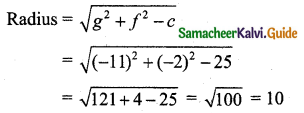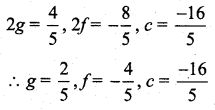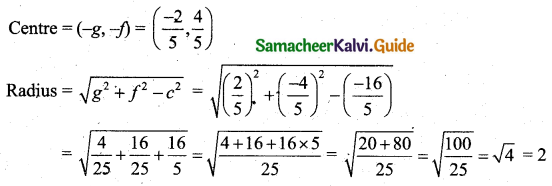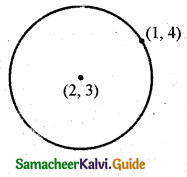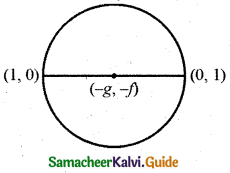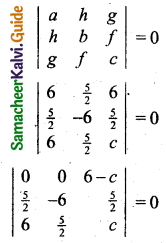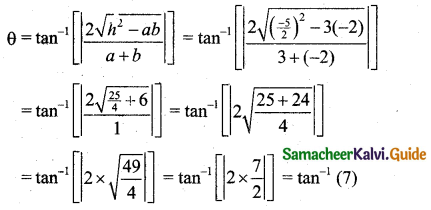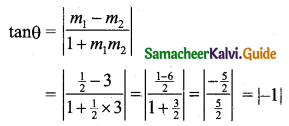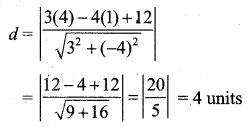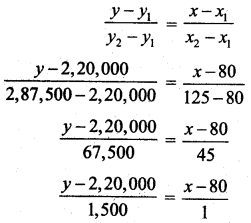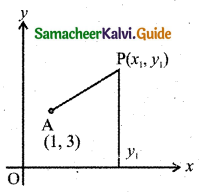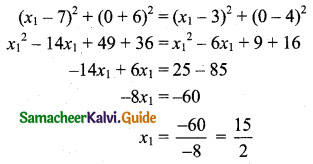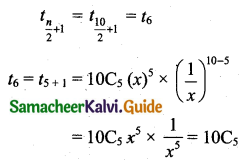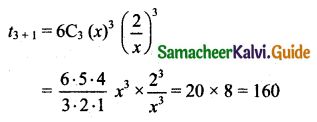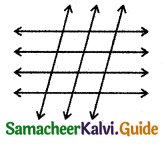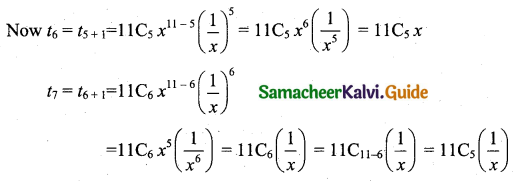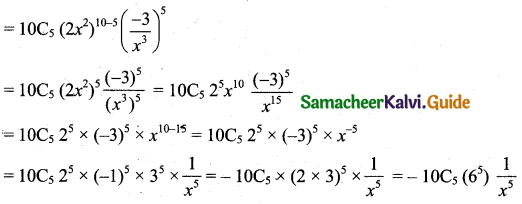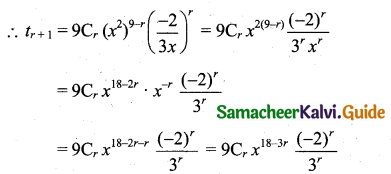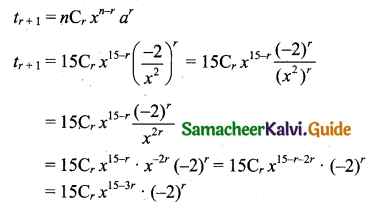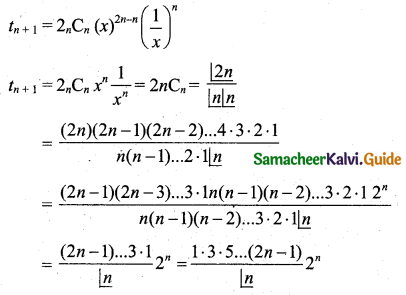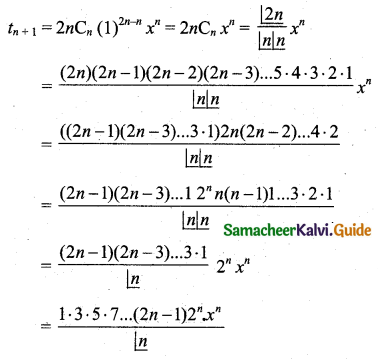Students can download 11th Business Maths Chapter 3 Analytical Geometry Ex 3.5 Questions and Answers, Notes, Samcheer Kalvi 11th Business Maths Guide Pdf helps you to revise the complete Tamilnadu State Board New Syllabus, helps students complete homework assignments and to score high marks in board exams.
Tamilnadu Samacheer Kalvi 11th Business Maths Solutions Chapter 3 Analytical Geometry Ex 3.5
Samacheer Kalvi 11th Business Maths Analytical Geometry Ex 3.5 Text Book Back Questions and Answers
Question 1.
Find the equation of the tangent to the circle x2 + y2 – 4x + 4y – 8 = 0 at (-2, -2).
Solution:
The equation of the tangent to the circle x2 + y2 – 4x + 4y – 8 = 0 at (x1, y1) is
xx1 + yy1 – 4\(\frac{\left(x+x_{1}\right)}{2}\) + 4\(\frac{\left(y+y_{1}\right)}{2}\) – 8 = 0
Here (x1, y1) = (-2, -2)
⇒ x(-2) + y(-2) – 2(x – 2) + 2(y – 2) – 8 = 0
⇒ -2x – 2y – 2x + 4 + 2y – 4 – 8 = 0
⇒ -4x – 8 = 0
⇒ x + 2 = 0
![]()
Question 2.
Determine whether the points P(1, 0), Q(2, 1) and R(2, 3) lie outside the circle, on the circle or inside the circle x2 + y2 – 4x – 6y + 9 = 0.
Solution:
The equation of the circle is x2 + y2 – 4x – 6y + 9 = 0
PT2 = \(x_{1}^{2}+y_{1}^{2}\) – 4x1 – 6y1 + 9
At P(1, 0), PT2 = 1 + 0 – 4 – 0 + 9 = 6 > 0
At Q(2, 1), PT2 = 4 + 1 – 8 – 6 + 9 = 0
At R(2, 3), PT2 = 4 + 9 – 8 – 18 + 9 = -4 < 0
The point P lies outside the circle.
The point Q lies on the circle.
The point R lies inside the circle.
Question 3.
Find the length of the tangent from (1, 2) to the circle x2 + y2 – 2x + 4y + 9 = 0.
Solution:
The length of the tangent from (x1, y1) to the circle x2 + y2 – 2x + 4y + 9 = 0 is \(\sqrt{x_{1}^{2}+y_{1}^{2}-2 x_{1}+4 y_{1}+9}\)
Length of the tangent from (1, 2) = \(\sqrt{1^{2}+2^{2}-2(1)+4(2)+9}\)
= \(\sqrt{1+4-2+8+9}\)
= \(\sqrt{20}\)
= \(\sqrt{4 \times 5}\)
= 2√5 units
![]()
Question 4.
Find the value of P if the line 3x + 4y – P = 0 is a tangent to the circle x2 + y2 = 16.
Solution:
The condition for a line y = mx + c to be a tangent to the circle x2 + y2 = a2 is c2 = a2 (1 + m2)
Equation of the line is 3x + 4y – P = 0
Equation of the circle is x2 + y2 = 16
4y = -3x + P
y = \(\frac{-3}{4} x+\frac{P}{4}\)
∴ m = \(\frac{-3}{4}\), c = \(\frac{P}{4}\)
Equation of the circle is x2 + y2 = 16
∴ a2 = 16
Condition for tangency we have c2 = a2(1 + m2)
⇒ \(\left(\frac{P}{4}\right)^{2}=16\left(1+\frac{9}{16}\right)\)
⇒ \(\frac{P^{2}}{16}=16\left(\frac{25}{16}\right)\)
⇒ P2 = 16 × 25
⇒ P = ±√16√25
⇒ P = ±4 × 5
⇒ P = ±20
